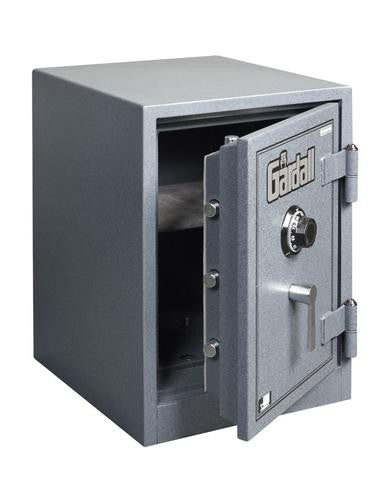Call Us: 800-207-2259
The following article is about safes and locating your safe: what you should store in your safes and where you should store your safe, how large a safe should be used to keep your items safely stored, protecting items from fires, burglary, water-damage, via safe usage.
If you've made the decision to purchase a safe, you are well on your way to providing much needed protection to your family's valuables. Whether you've chosen a fireproof safe or one that is burglar resistant, one important decision you must make is the location of your safe.
Of course, the size of your safe is a large factor in determining where it will be located. If you are purchasing a large vault type safe, it can be free standing, located in a room or closet if space permits. Smaller size safes offer many different location options, allowing you to choose which best suits your home's layout.
Floor types are one of the most out of the way safes available. These are lowered into the floor and covered with a piece of your flooring. Of course, this option does not work in a carpeted room, but can work well in a closet, or other area of the house where the cut in the flooring will not be noticed. These safes are a good choice if you are just building your home, as they are most easily installed before your sub flooring is put down. These safes can be a bit of a challenge, however if you need a very large one. In a floor safe large means deep, and accessing the contents at the bottom can prove tricky.
These safes are a good choice if you are just building your home, as they are most easily installed before your sub flooring is put down. These safes can be a bit of a challenge, however if you need a very large one. In a floor safe large means deep, and accessing the contents at the bottom can prove tricky.
 Wall safes are also very difficult for an intruder to locate. These are installed by cutting a hole into the drywall and then covering the safe with an inconspicuous door. Again, these are most easily installed during the initial building of a home, but can be installed at any time.
Wall safes are also very difficult for an intruder to locate. These are installed by cutting a hole into the drywall and then covering the safe with an inconspicuous door. Again, these are most easily installed during the initial building of a home, but can be installed at any time.
 Probably the most common type of residential safe is the small freestanding safe. These come in a wide range of sizes, and, though portable, they are heavy enough to make "walking out the door" with them difficult. For added security, it is recommended that these safes be located out of sight, perhaps in a closet, and bolted to the wall or floor. This provides an added measure of protection without the hassle of installing them in a wall or floor.
Probably the most common type of residential safe is the small freestanding safe. These come in a wide range of sizes, and, though portable, they are heavy enough to make "walking out the door" with them difficult. For added security, it is recommended that these safes be located out of sight, perhaps in a closet, and bolted to the wall or floor. This provides an added measure of protection without the hassle of installing them in a wall or floor.
Regardless of where you locate your new safe, you can rest easier knowing that your family's valuables and papers are secure.